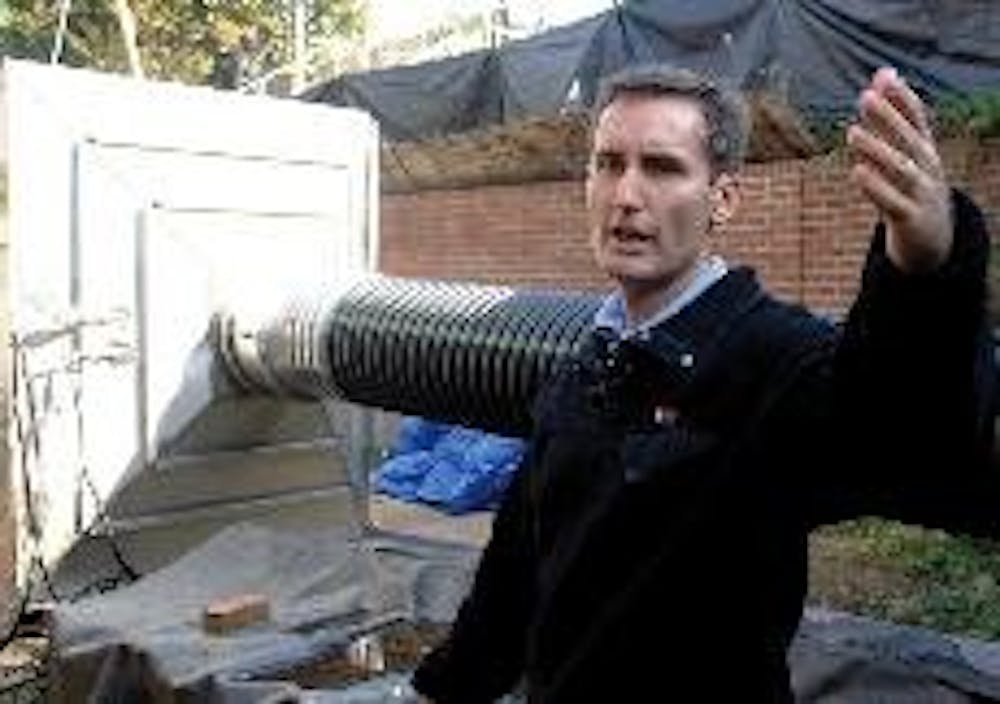Digging of the last known buried munitions pit from the World War I era in D.C. officially began Oct. 29 in an area that could be considered AU's backyard.
Spring Valley Munitions Pit 3, the official name of the site, is located at 4825 Glenbrook Road, a property owned by AU and located directly next to AU's unoccupied official university president's house.
The project budget is $8 million and is scheduled to last 14 weeks, with an estimated completion date of sometime in February, according to Dan Noble, Spring Valley project manager for the Army Corps of Engineers.
The workers on the site are scheduled to work Monday through Friday 8 a.m. to 4 p.m. every day except federal holidays, he said.
Military munitions, laboratory glassware, scrap material and possibly contaminated soil are a few of the potentially hazardous items the workers are expecting to find at the site, he said.
"It is a slow and careful process," Noble said. "[We are] measuring our progress in barrels of dirt."
In 1993, contractors in the nearby neighborhood discovered the first pit of buried munitions and removed it in January of that year, Noble said.
In the late 1990s, three additional pits were found in the neighborhood, two of which were cleared in the 1990s and early 2000s, he said.
However, due to private property restrictions, the right to access and dig up Pit 3 was lost until recently, when AU became the owner of the land and gave its approval for the dig, Noble said.
The operation currently underway is "fairly complex," according to Noble.
An Engineered Control Structure, which is composed of aluminum plating to prevent any potentially fast-moving pieces from leaving the tent in case of an accidental detonation, was build over the pit, Noble wrote in a newsletter for Spring Valley residents.
A vapor containment cover - a large cloth covering - was then placed over the building to capture and filter any potentially harmful chemicals that may be released, he said.
A chemical agent filtration network was set up to control all air flows into the structure, allowing for the constant checking of air quality, Noble said.
The filter runs on electric power from AU, Noble said. However, if there were to be an interruption of electricity, a generator would instantly kick in, and digging at the sight would cease as a precautionary measure, Noble said.
A command center with closed-circuit televisions located on the site allows for continuous monitoring of workers at the site, he said.
"Real time monitoring is done right here in the driveway," Noble said.
There are three rotating groups of pit workers with four members each - one group will be in the pit, while another is on standby in case assistance is needed and the third crew receives a break, he said.
Each group consists of a team leader, a heavy equipment leader and two diggers, all wearing personal protective equipment, Noble said.
Though Pit 3 is the last known munitions pit to exist in the area, there is still a large ongoing investigation looking into other properties where potential sites may be located. None have been found at this time, Noble said.





